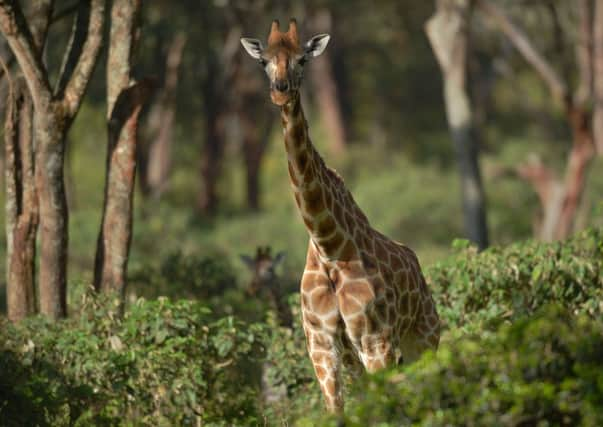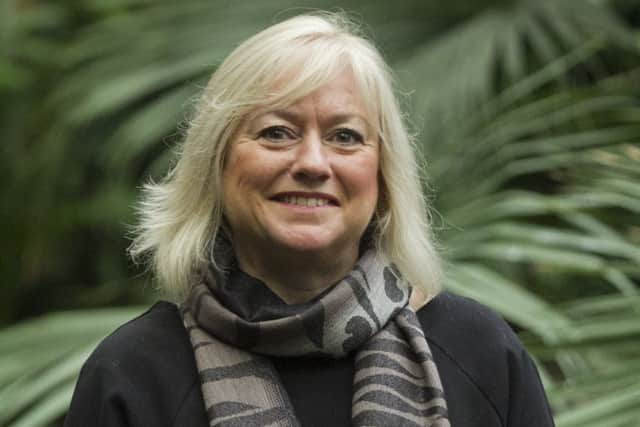Edinburgh Zoo can stand tall in its commitment to saving giraffes – Barbara Smith


The evidence is overwhelming that human activities are behind nature’s rapid decline, caused by deforestation and development, hunting and poaching, the destruction of our seas and oceans, pollution, and, of course, climate change.
It has been estimated that current extinction rates are around 1,000 times higher than before we humans came along. As things stand, we are at risk of destroying our own life-support machine.
Advertisement
Hide AdAdvertisement
Hide AdYet, faced with these threats, we also have an opportunity. Because recognising that there is no future without nature is also to acknowledge the need to act now – and together.


As a wildlife conservation charity active in more than 20 countries around the world, the Royal Zoological Society of Scotland has the potential to play an even more influential role than at present.
At Edinburgh Zoo and Highland Wildlife Park, we foster deep and lasting connections with nature, provide safe havens and support breeding programmes which are vital to the very survival of threatened species.
Through education, we inspire the next generation of conservationists, while groundbreaking science and research enables us to learn more about the incredible species in our care and inform measures to help safeguard species in the wild, here in Scotland and across the globe.
Today, our work takes a huge step forward with the launch of Scotland’s most ambitious international conservation campaign, named Edinburgh Zoo’s Big 5.
By 2025, we aim to raise £15 million to deliver five major projects, one by one. With support, we will be able to deliver five new wildlife habitats at Edinburgh Zoo, each combining the most natural living spaces for threatened animals with inspirational learning zones.
Crucially, these projects will support conservation partnerships to protect our Big 5 species in the wild, with practical action underpinned by our research and veterinary expertise. Education will be at the heart of the campaign, with five new programmes helping to bring STEM subjects alive at Edinburgh Zoo and in schools across Scotland using digital technology.
Our plans include a specially-designed home for Rothschild giraffes, with open spaces to roam and high-level walkways to bring visitors face to face with these majestic animals. The wild population of Rothschild giraffes is now fewer than 1,500, principally due to habitat loss. However, all is not lost as a possibility exists to restore giraffes to new reserves in Uganda and help communities live beside wildlife in harmony.
Advertisement
Hide AdAdvertisement
Hide AdA forest habitat at the zoo would be ideal for breeding sun bears, one of the rarest and smallest of bear species. Taken from the wild and farmed for their bile, sun bears suffer in horrific conditions. RZSS has been working with Free the Bears in Cambodia since 2010, when two sun bears rescued from the illegal pet trade were rehomed in Edinburgh. We provide expert veterinary support and hope to expand our role through hands-on training courses, equipping science students with practical experience.
Edinburgh Zoo currently cares for juvenile male Asian rhinos until they reach sexual maturity, at which point they join the endangered species breeding programme. Having once ranged across the continent, fragmented populations decimated by the illegal wildlife trade now depend on protected reserves. A breeding habitat in Edinburgh would mean we can help build a genetically sustainable population.
The clearing of rainforests for palm oil plantations throughout the tropics has led to an incalculable loss of biodiversity. A tropical house at the zoo with free-roaming wildlife would offer up-close encounters with endangered crocodilians, monkeys, exotic birds and amphibians, with discovery zones giving people a direct connection with animals and an insight into complex environmental issues.
Edinburgh was the first zoo in the world to care for king penguins and a climate-controlled environment would help us to breed successfully, while also benefiting endangered northern rockhoppers. Vulnerable to climate change, penguins are an ideal species to engage young people with sustainability.
While this campaign alone will not solve the wider extinction crisis, these targeted interventions will give hope for the future for these species, help to tackle five of the most pressing environmental threats and advance Scotland’s reputation as an international leader in conservation, education and research.
To find out more and make a donation, please visit crowdfunder.co.uk/giraffes or call 0131 314 0380.
Barbara Smith, chief executive officer, Royal Zoological Society of Scotland.